Temple of Zeus pediments
1/24
Earn XP
Description and Tags
Name | Mastery | Learn | Test | Matching | Spaced |
|---|
No study sessions yet.
25 Terms
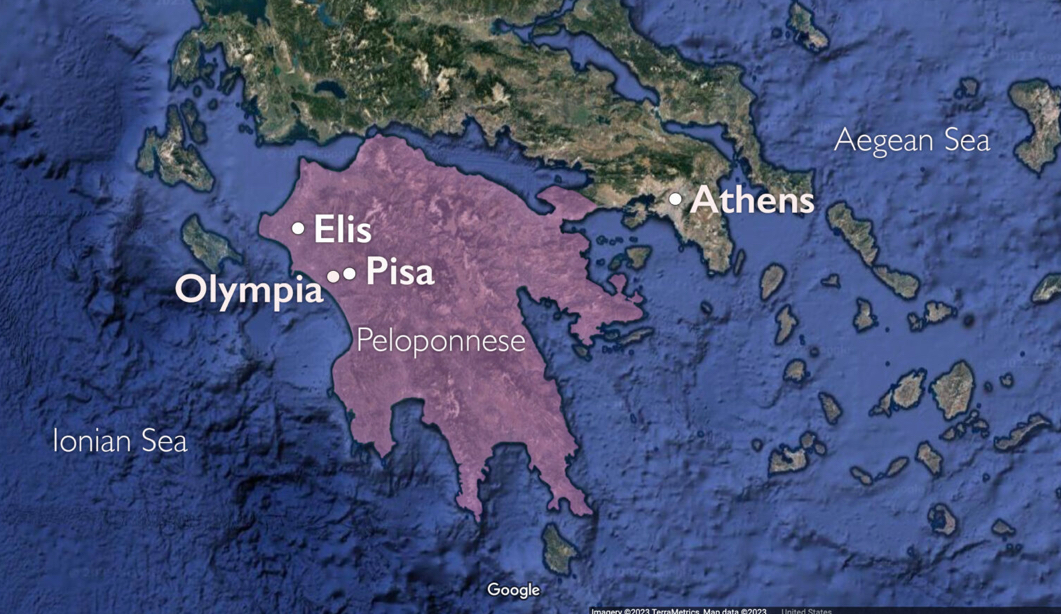
Where is the Sanctuary of Zeus located?
A Panhellenic sanctuary in a wooded valley in Olympia

What happens at the Sanctuary of Zeus every 4 years?
The Olympic Games are held
When was the Temple of Zeus built?
C. 471-457 BC, Early classical period

What wars influenced the creation of the temple?
Persian wars
What material is the temple made from?
Limestone
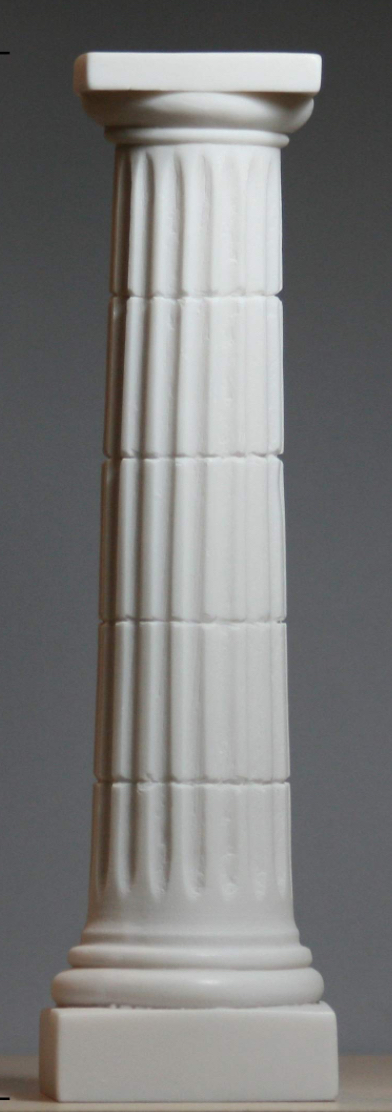
What type of columns are used within the temple?
Doric order
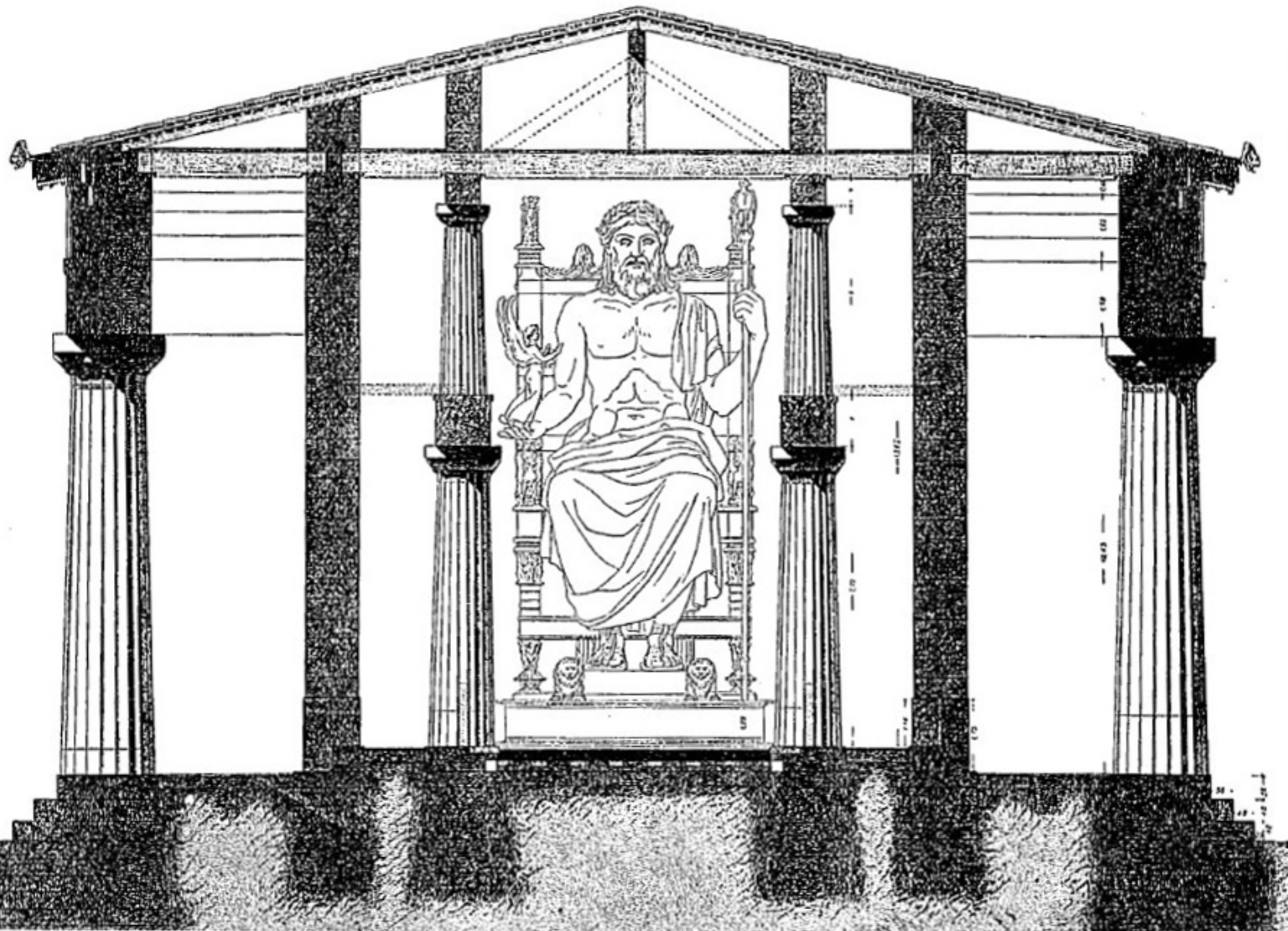
What cult statue is inside the cella?
A 12m high chryselephantine (veneered in gold and ivory) statue of Zeus.
How long are the pediments?
25m long
How high are the pediments at the apex?
3.3m high
What material are the pediments made from?
In the round Parian marble
When are the pediments dated to?
460 BC

What myth is depicted on the East Pediment?
The founding myth of Oinomaos and Pelops’ chariot race:
To win the hand of Hippodameia, suitors had to defeat her father King Oinomaos in a chariot race. Pelops won his chariot race and so Hippodameia, but her father dies during the race due to trickery.
The pediment creates an interactive snapshot prior to the race showing the calm before the storm.
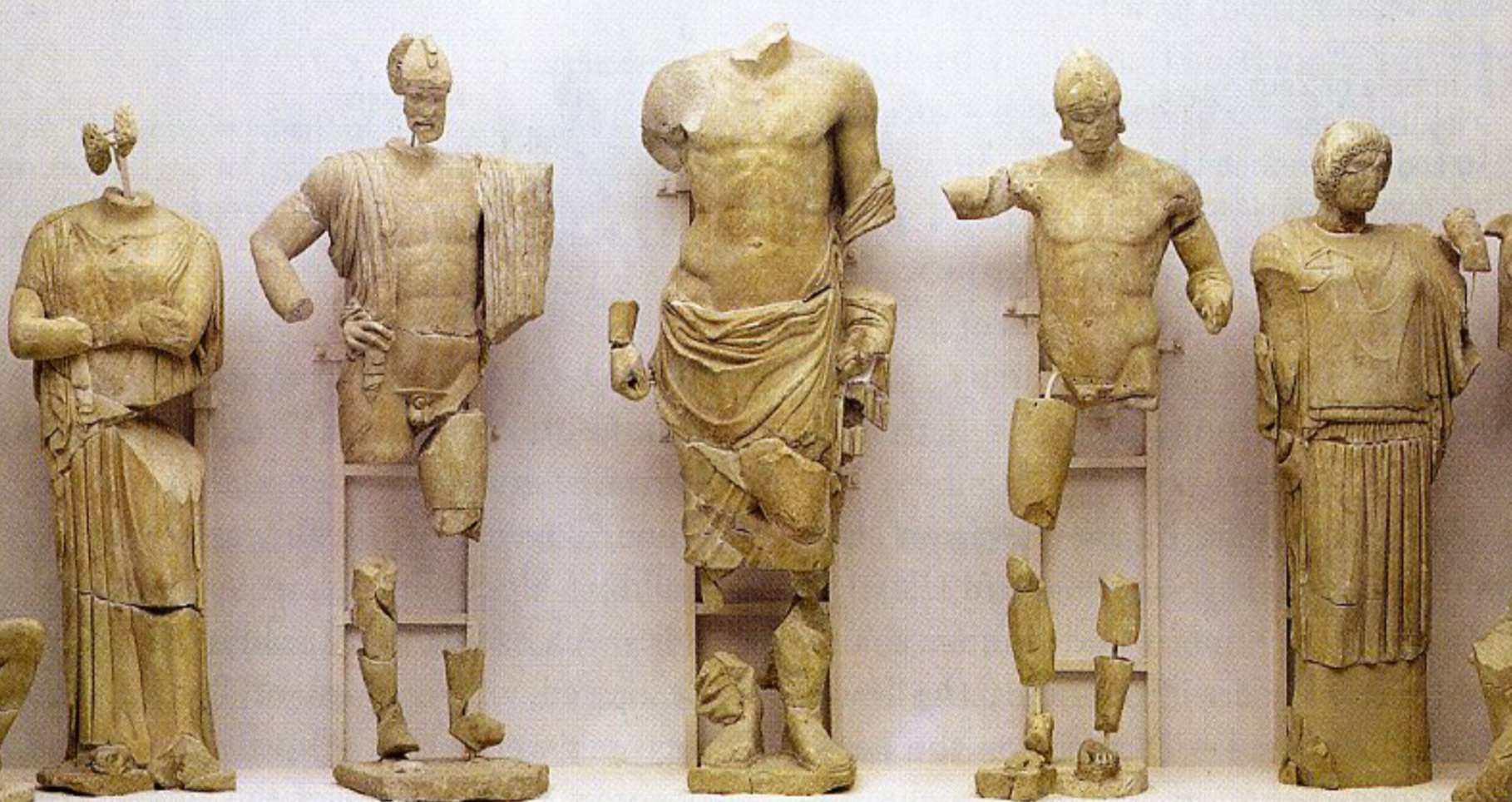
What god is at the apex of the East pediment? Why?
Zeus who solved unity of scale issues by being so large at the apex at 3.3m high. He also contributes to the narrative as he is associated with fate.
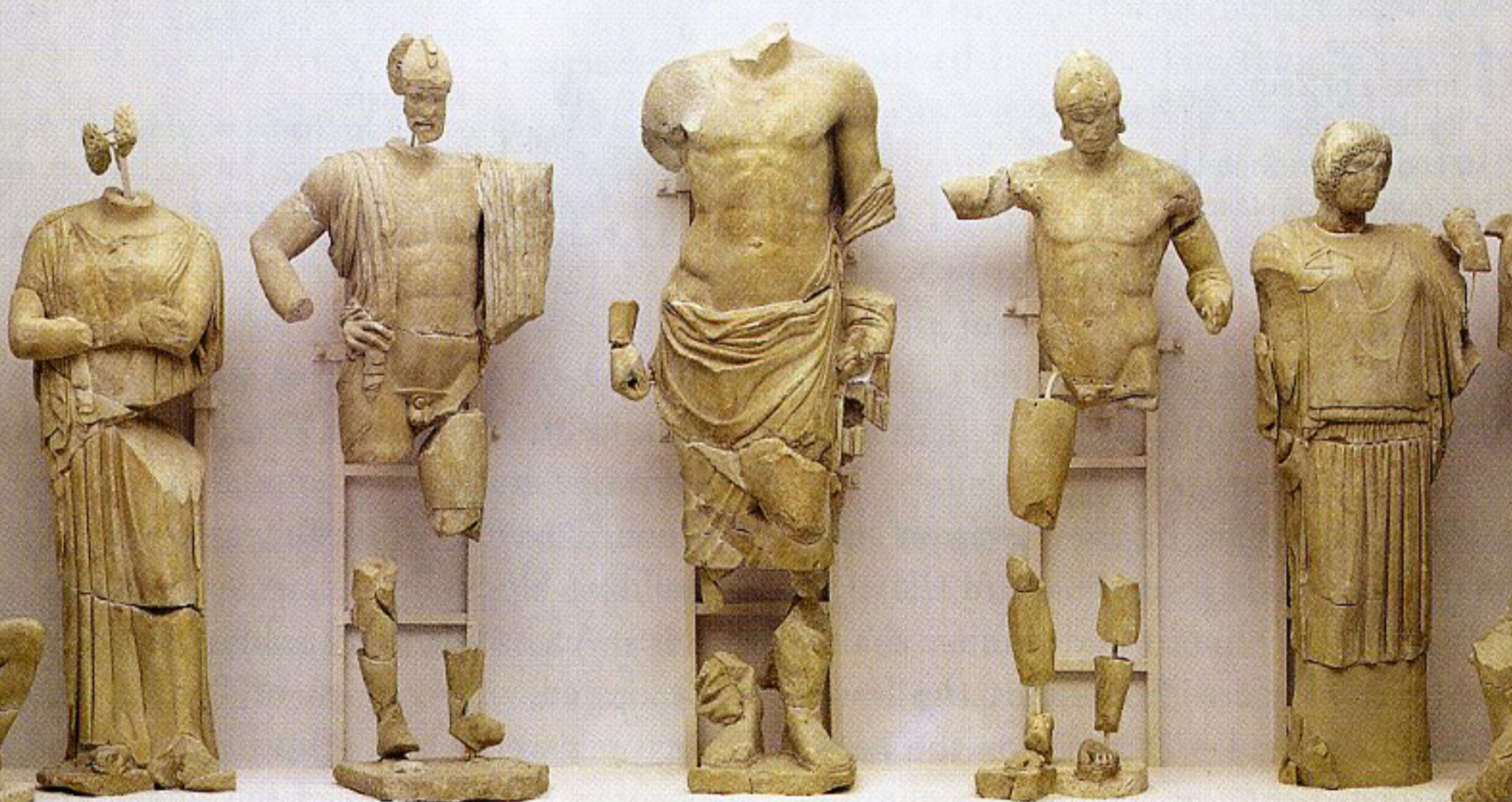
Who stands to the left and right of Zeus?
Left: Oinomaos and Sterope (the wife if Oinomaos)
Right: Pelops and Hippodameia

How is detail created in the figure of Oinomaos? (3 POINTS)
The narrative is reinforced through Oinomaos’ arrogant body language (e.g. hand on the hip) suggesting a false sense of confidence that he will win as he has defeated all previous suitors in chariot racing BUT this is ironic as he loses the chariot race this time to Pelops
Age differentiation seen in the facial hair suggesting he is mature- Typical feature of the early classical period
Drapery hanging over his shoulders in deep folds adds depth
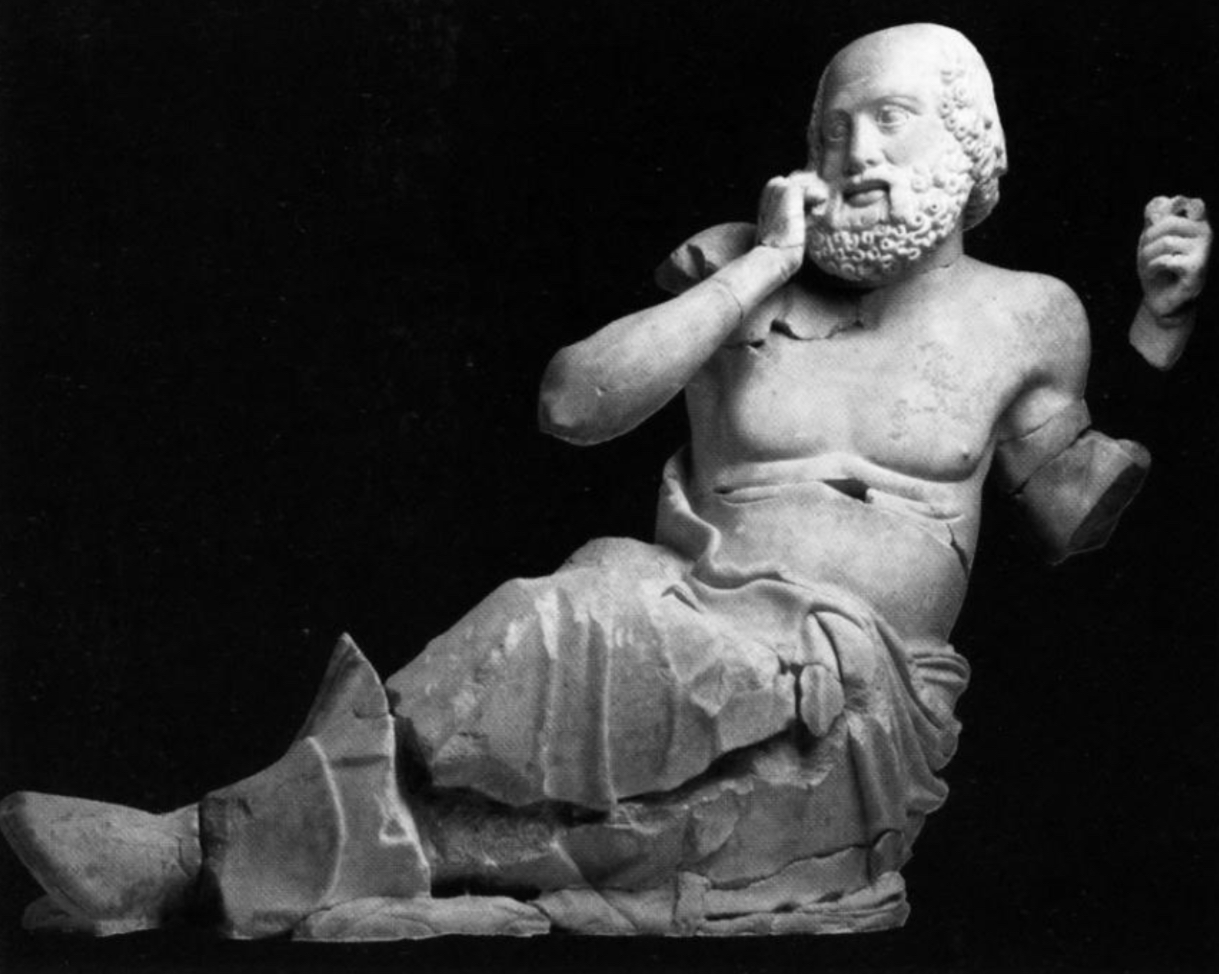
How is detail created in the seer on the right hand side of the east pediment? (4 POINTS)
The Seer’s emotive and anxious body language foreshadows Oinomao’s death e.g. hand held to his face in nervous anticipation, leaning backwards slightly in shock
Clear age differentiation e.g. via muscle and hair
Unity of scale- Reclining pose to fit the right corner of the pediment as the shape becomes narrower
Stylistic love of patterns in the volutes seen in his hair and beard- Fixes visibility issue by being clear from a distance
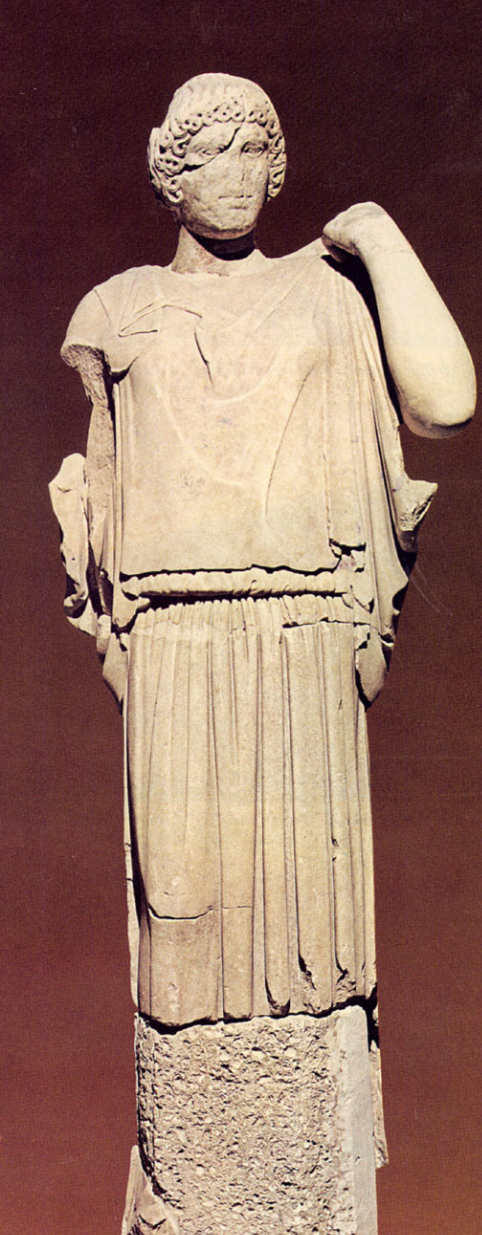
How is detail created in the figure of Hippodameia on the east pediment? (4)
Modest bridal gesture e.g. arm drawn up to hold her peplos in place
Catenary on her upper drapery highlights her breasts and anatomy beneath the peplos
Fluting in lower peplos
Volutes in the hair- Stylistic feature showing the Greeks love for patterns
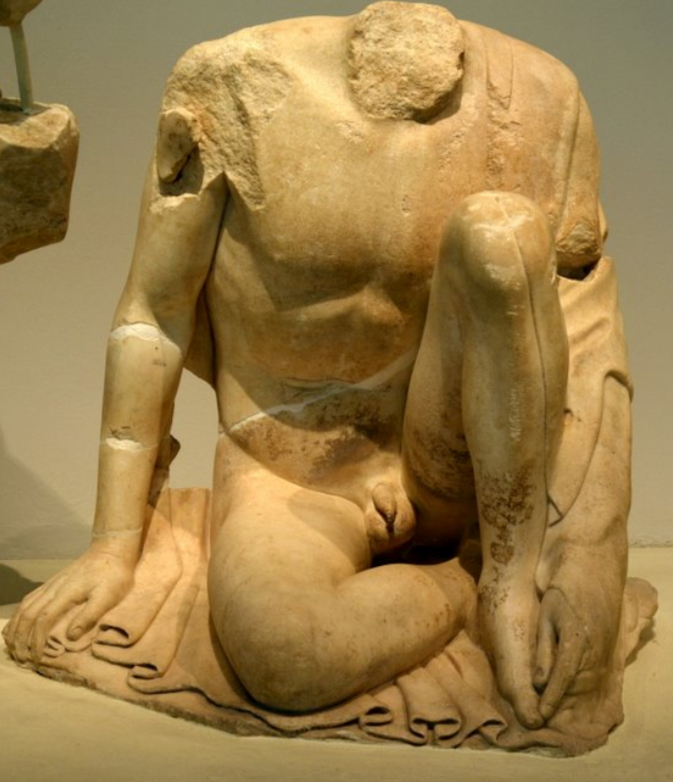
How is detail created in the statue of the young boy left of the seer on the east pediment? What is his purpose? (3 POINTS)
The young boy creates a contrast to the seer to his right- relaxed bored pose vs tense anxious pose
Naturalistic bored pose e.g. leg drawn up, left arm fidgeting with his toes
Underdeveloped musculature makes him appear androgynous and gives a clearer age differentiation

How is detail created on the river god situated on our left of the east pediment?
Reclining twisting pose fits acute corner solving the issue of unity of scale
Looks towards the centre of the pediment drawing focus to the central figures
Local to the site of Olympia- Good unity of theme
Severe features e.g. defined ribs and hip bones
Modelling lines reveal legs
Accurate anatomy e.g. skin, muscles and bones

What is the narrative depicted on the west pediment?
The Centauromachy overseen by Apollo
How is the Centauromachy often interpreted?
A metaphor for the Perisian wars.
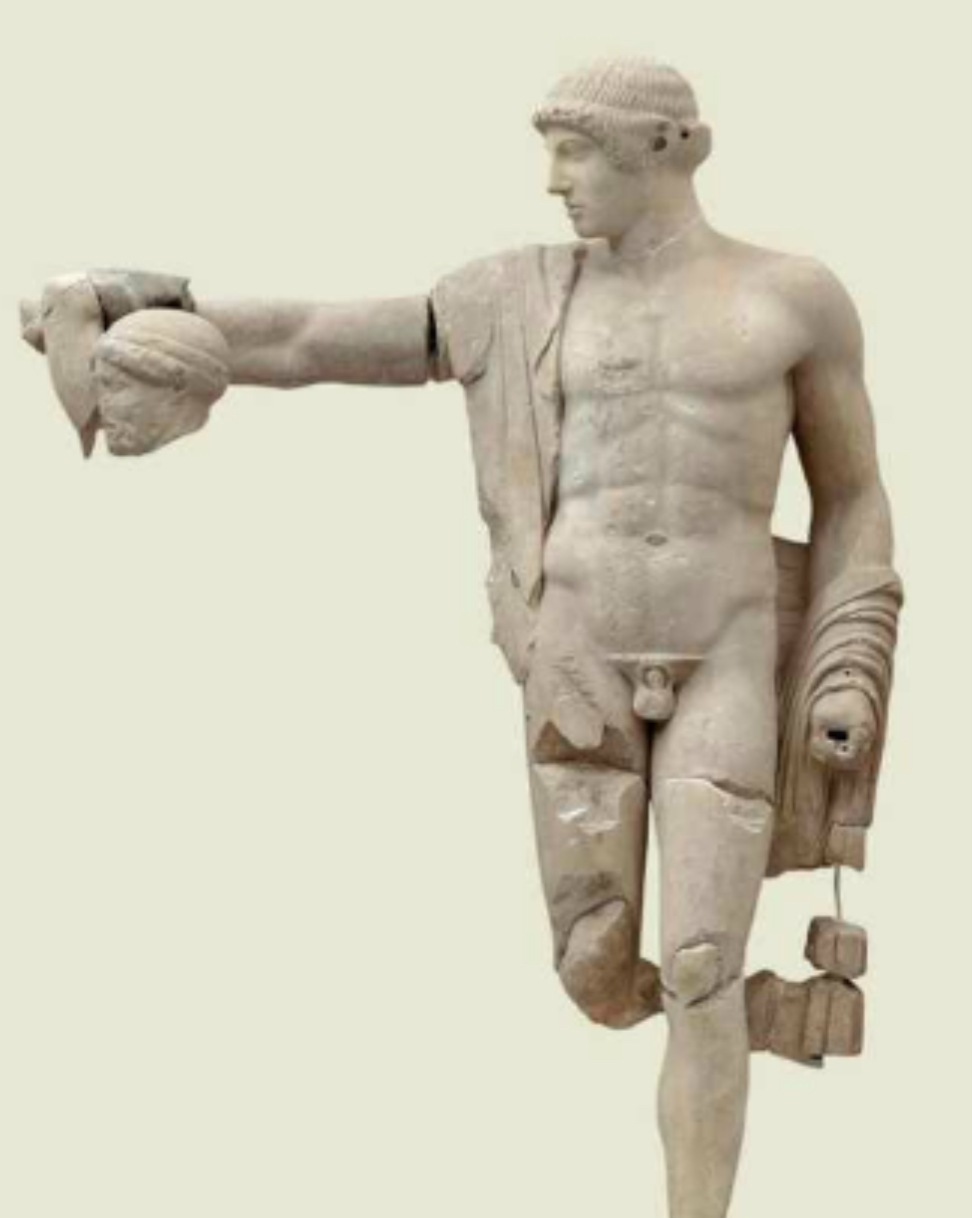
How is detail created in the figure of Apollo on the west pediment? (4 POINTS)
Severe unemotional facial expression giving him an air of superiority and transcendence e.g. thick eyelids and heavy chin
Intricately fine curls tied in a fillet- Advanced hairstyle
Severe realistic anatomy e.g. neck twist, pectorals, ribs and abdominals
Dynamic action pose→ Arm pointing north to Zeus’ ash altar
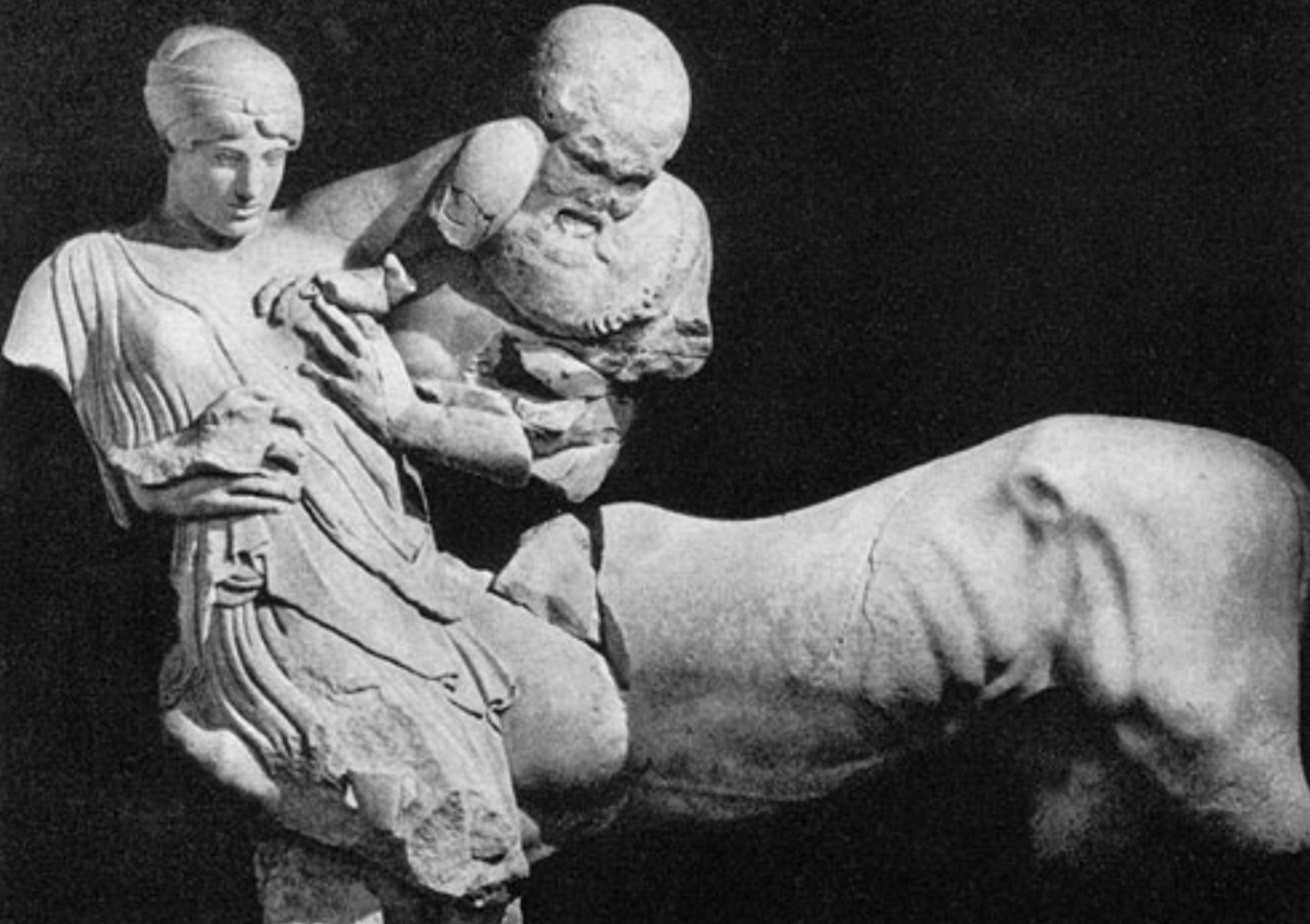
How is detail and narrative created in this part of the west pediment? (3 POINTS)
A young Lapith woman is being groped by an older centaur→ an overt display of hubris
The centaur→ Pose: right arm wrapped around her body trapping her, left arm groping her chest. Age differentiation seen in his beard and severe features e.g. defined ribs
The Lapith→ Pose: resistive and symbolic of sophrosyne with her left arm elbowing his face and her right arm pulling his hand away. Calm severe and determined facial expression. Modelling lines reveal upper torso.
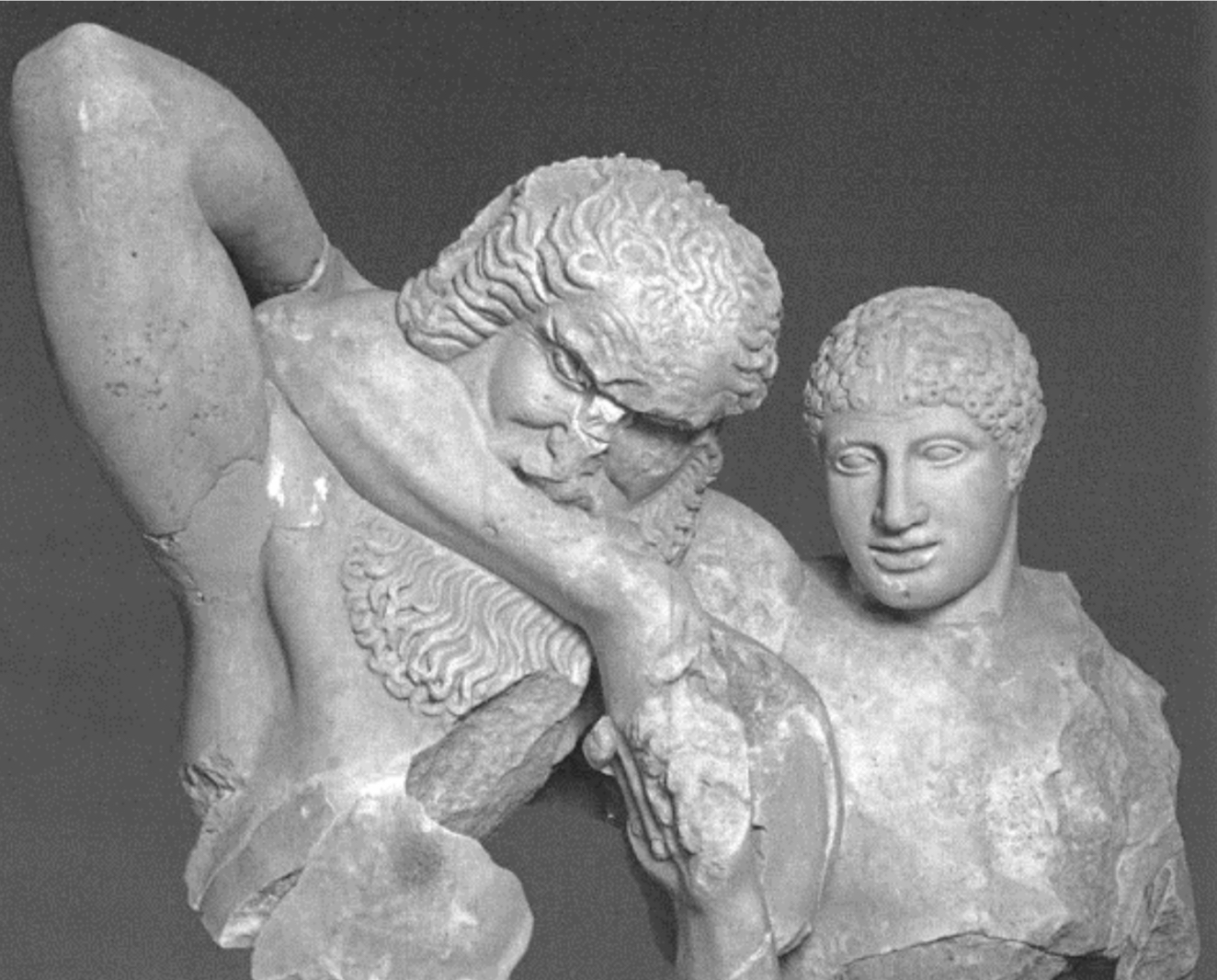
How is detail and narrative created in this part of the west pediment? Is it even effective? (5 POINTS)
Depicting a Lapith youth being attacked by a centaur
The centaur violently bites the Lapith emphasising the hubris and barbarism of the centaurs e.g. centaurs face is constricted in concentration and tension (narrowed eyes, scrunched up nose and face) as he bites down on the Lapiths arm
Clear age differentiation e.g. facial hair on the centaur mature him, balding
Centaur has no neck?
Lapith made has an awkward archaic smile stylistic of the time but not believable for the narrative
Scholarly Quote
What does Woodford say about the pediments?
Woodford compliments ‘their skill in depicting figures standing quietly at ease or portraying them vigorously in action, their mastery of drapery that both conceals the body and reveals the pose’